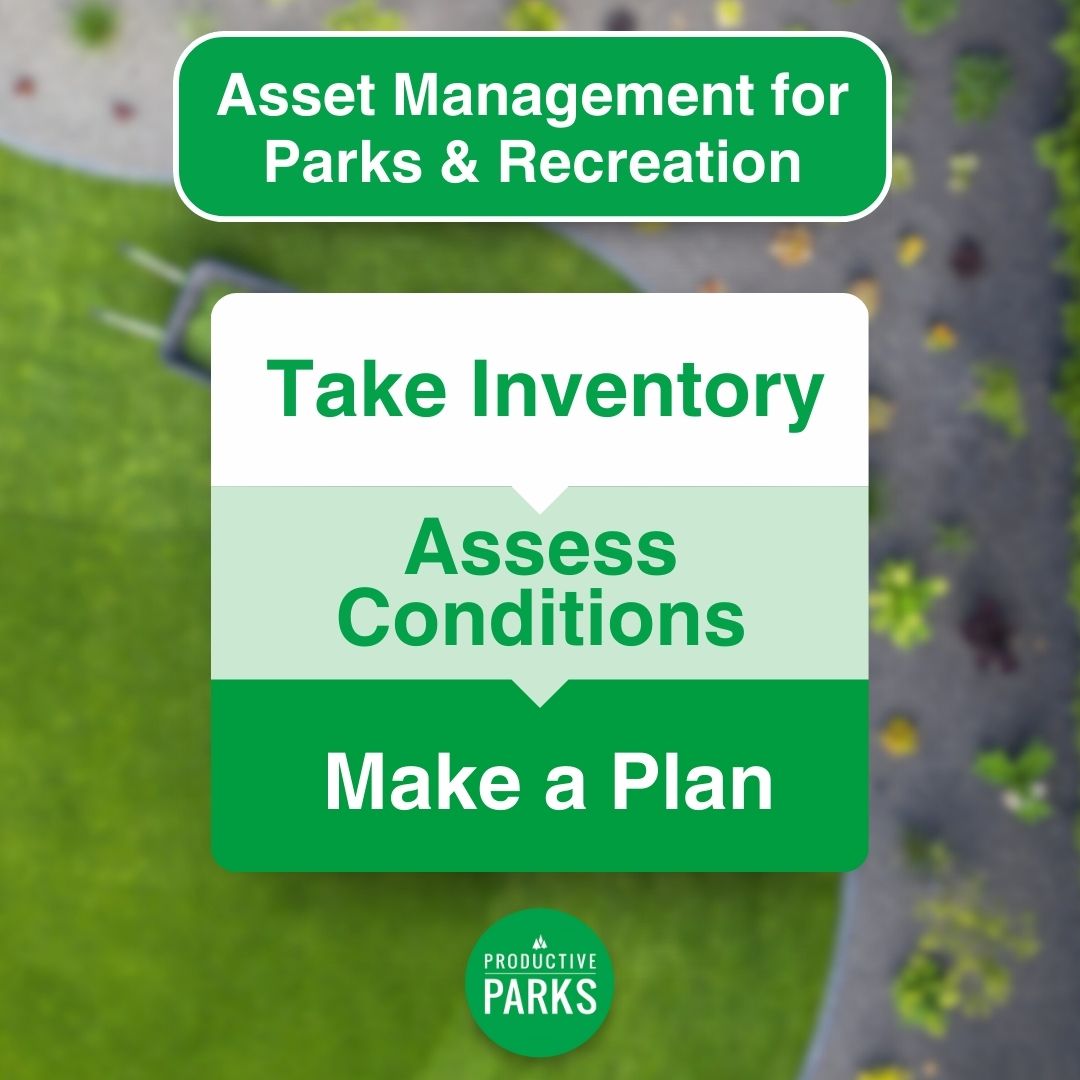 a public pool" width="1680" height="400" />
a public pool" width="1680" height="400" /> a public pool" width="1680" height="400" />
a public pool" width="1680" height="400" />
From playgrounds and gyms to paths and ballfields, parks and recreation agencies have a lot going on and many different types of assets.
Managing and tracking those assets can be a complicated balance of scheduling, budgeting, and labor management.
As we all know, losing track of things is easy when it gets busy. First, a missed inspection or preventative maintenance task occurs. The little things can build up quickly when managing so many assets.
Losing track of your assets could cost extra money, labor, and capital costs when budgets are already tight.
The good news: Once you have a system to manage your park and facility assets, striking that balance becomes easier. You’ll still have challenges, but you’ll also have a focused path when issues arise with your assets.
This article defines asset management, explains why it’s important for parks and recreation agencies, and provides tips on improving asset management.
In maintenance terms, an asset refers to any physical resource used in the agency’s operations. In the parks and recreation setting, this can mean any property used for programming, public enjoyment, or maintaining other assets.
A parks and recreation asset can be many things: a park property, a playground, a pickleball court, mower, pickup truck with a snow plow, or park sign to name a few.
Asset management refers to understanding your agency’s assets and monitoring and maintaining them so they stay in the best condition for as long as possible. The management can include a system of inspections, tracking, preventative maintenance, repairs, and replacements.
A better understanding of your assets can have several benefits. Here are some ways your team, agency, and community can benefit from an asset management plan:

Do you need asset management? If you’re unsure of everything you have in your park system and facilities, their age, and when they need replacement, then it may be a good time to consider adopting an asset management plan.
Here are some steps to get started.
The first step of asset management is listing and organizing your existing assets. Creating an inventory can be daunting, especially if you have many assets.
One way to start is by categorizing the most essential assets to track. For example, you may begin by taking an inventory of your playground features, facility mechanical systems, and park structures. Gradually build on that inventory until everything you want to track gets accounted for.
Typical parks and recreation asset categories include:
Starting with these categories is an excellent place to begin tracking your assets.
After an inventory is established, each asset should undergo a thorough inspection. Record the condition of the asset, how it is performing, and how many years remain of its expected lifespan.
Include any historical records of labor and repair costs, breakdowns, or disruptions. If these records aren’t readily available, consider using asset management software for parks and recreation to have a centralized location to store and track this information.
Establish a standard rating system for assessing assets. For example, use a scale of 1 to 5 to represent an asset's existing condition.
Here is an example of the 1-5 scale condition assessment:
As you grade your asset, you may also want to determine the consequence of failure. The consequence of failure determines the impact when an asset breaks down or becomes unusable.
When analyzing the consequence of failure, determine its impact on safety, operations, and the environment. Also, calculate the direct and indirect costs to the agency, should it fail.
Assets with higher consequences of failure require more attention, monitoring, and repair priority. For example, an interpretive sign would have a lower consequence of failure than a playground climbing structure.
Now that you’ve organized your assets, know their current condition, and understand the impacts if they fail, it’s time to take that information and create a maintenance plan.
In the plan, outline your team's tasks to ensure each asset performs best for its intended purpose. Tasks can include routine checks, more thorough inspections, and preventative maintenance.
Use the plan as a guide to budget for operational costs and scheduling for capital expenditures.
Learn more about creating a parks and recreation maintenance plan in Episode 61 of the Productive Parks 5-Minute Podcast.
The management team should periodically review an established plan for effectiveness and adjust it as the agency’s and community’s needs change.
We’ve come a long way from the days of paper assessments on old clipboards and the "I’ll fix it when it breaks" mentality. New technology and attitudes make asset management a higher priority and easier to implement.
Asset management software for parks and recreation can help streamline inventorying, assessing, and caring for assets. Software can also monitor labor hours and costs. It provides an easy way to retrieve past inspections. Asset tracking software allows your staff one place to create work requests for specific assets to report any problems or damage.
Developing sustainable practices for your parks and facility assets can also free up budget money and increase the lifespan of some assets.
An asset management plan is one of the most effective ways to manage your parks and recreation agency's essential properties. The time and effort spent managing assets will pay off with safer areas, longer-lasting equipment, and fewer maintenance and programming disruptions. Asset tracking software can be very helpful for implementing your asset management plan.